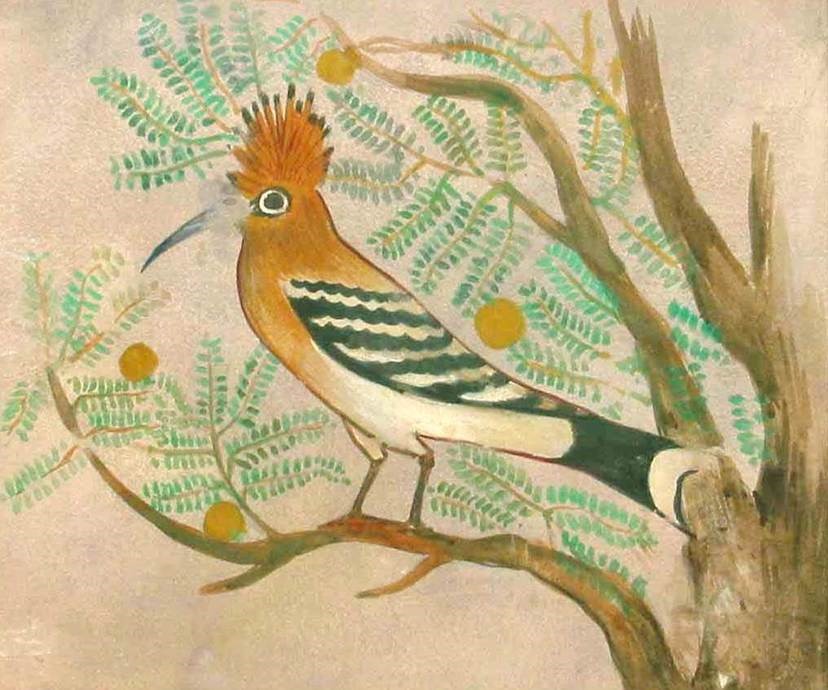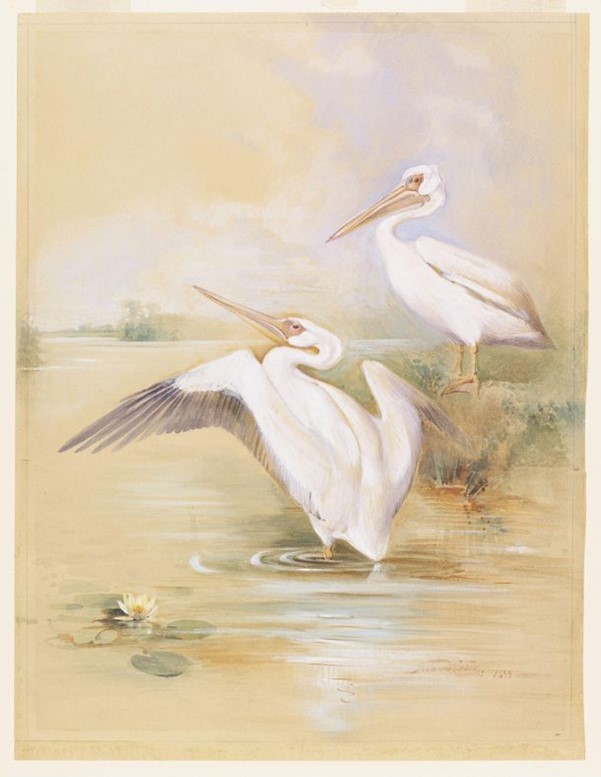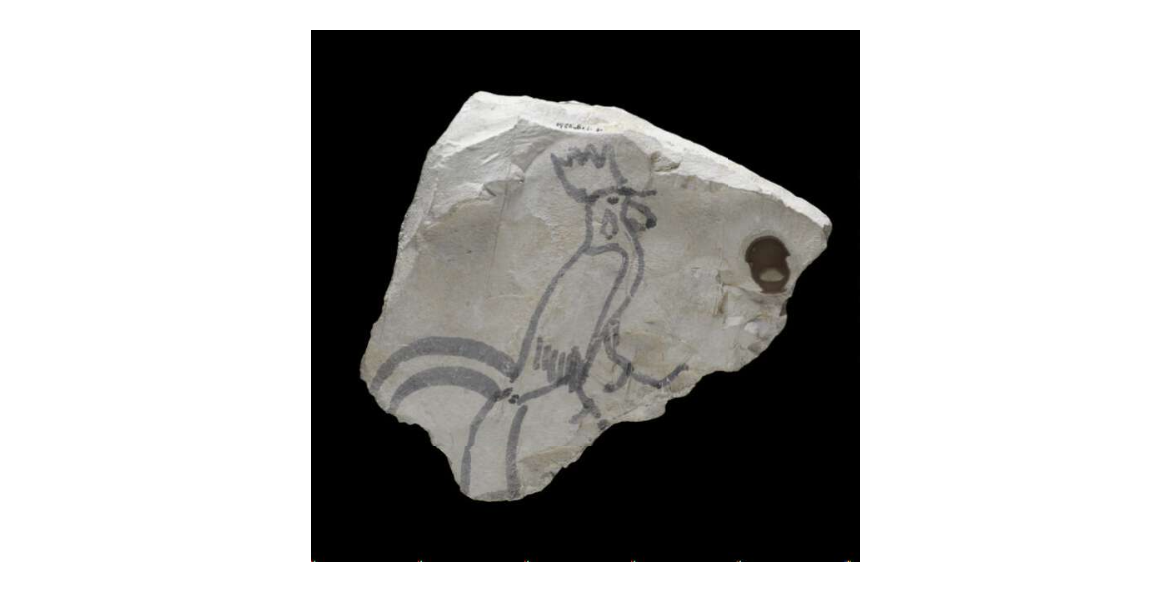Blog
Blog
Before Tutankhamun, Howard Carter’s first love was painting animals
Article by:
Dr Linda Evans

Associate Professor
Howard Carter is well known for his discovery of the extraordinary tomb of Tutankhamun, made 100 years ago in November this year. He is celebrated worldwide as a successful archaeologist, but he actually began his career as a talented artist. His father, Samuel John Carter, was a successful painter who specialised in animal portraits, primarily the horses and pets of wealthy clients. As a boy, Howard received instruction in painting and drawing from Samuel, excelling in the close observation of animals, which was no doubt also inspired by a large menagerie of pets that he kept at his home in Swaffham in Norfolk.
His artistic skill soon caught the attention of the Amherst family, for whom his father frequently worked. The Amhersts were avid collectors of Egyptian antiquities who also provided financial support for the Egypt Exploration Fund (EEF), the organisation then dedicated to preserving Egypt’s ancient monuments. Through their connections, Howard was introduced to the archaeologist Percy Newberry in the summer of 1891, and despite having no knowledge of ancient Egypt or archaeological training, he was subsequently given the opportunity to work with Newberry as a draughtsman at the site of Beni Hassan. He left England bound for Egypt in October 1891, just five months after his 17th birthday.

Hoopoe from Tomb 3 (Khnumhotep II) at Beni Hasan, main chamber, east wall, above shrine. Watercolour by Howard Carter. Image held in the Lucy Gura Archive, EES.
The cemetery of Beni Hassan consists of 39 tombs excavated into a cliff-face on the east side of the Nile River, as well as hundreds of other burials in the slopes below. The rock-cut tombs were constructed for the region's local rulers during Egypt's turbulent First Intermediate Period (c. 2181–2055 BC) and later Middle Kingdom period (c. 2055–1650 BC). What makes these tombs truly special, however, are the detailed and brightly coloured paintings that adorn their walls, which are among the best-preserved in the country. Newberry was tasked by the EEF to record and publish the tombs, including reproductions of their elaborate wall scenes, and it was for this purpose that Carter worked with the team until early 1892.
I am especially interested in Howard Carter’s time at Beni Hassan because the Australian Centre for Egyptology has been working at the site since 2010 recording the same tomb paintings but now in digital photography as well as drawings. Consequently, I know that of all the places he could have begun his Egyptological journey, Beni Hassan was ideal, as the paintings Carter was tasked with copying are filled with animals. The tomb walls are decorated with scenes of life in the ancient Nile Valley and beyond, and in all these contexts, animals abound - from hedgehogs to hyenas in desert vignettes, cattle, goats, and donkeys in agricultural scenes, hippos, fish, and waterbirds along the river, and dogs and monkeys in households, to name just a few. Some of the animals represented here are found nowhere else in Egypt, such as bats and wild pigs.

A pair of White Pelicans, watercolour by Howard Carter, 1899. Victoria and Albert Museum, London, SD.211.
Like Carter, the Egyptian artists greatly appreciated the beauty of animals, reproducing their appearance with an acute eye and sympathetic hand. So too Carter’s delicate watercolour copies of these images capture their forms with exceptional skill and equal feeling. For an animal artist, Beni Hassan was a treasure-trove, not only for its ancient animal portraits but for the wildlife that Carter could observe in the surrounding countryside and which he also painted and sometimes sold. In fact, a watercolour of two pelicans that he made along the banks of the Nile near Beni Hassan and now held in the Victoria and Albert Museum, was to provide a zoological link between his animal studies, the art of the ancient Egyptians, and my own investigations at the site, when in 2015 I discovered an extremely rare painting of a Great White pelican in the tomb of a man called Baqet II.
In the years that followed his time at Beni Hassan, archaeology was to become Carter’s primary focus, but it appears that his love of animal art continued unabated. In the year after his discovery of Tutankhamun’s tomb, his first volume devoted to the excavation was released, but in the same year he also published a journal article about an object that had been unearthed in the Valley of the Kings in a previous dig season. The ostracon, a painted flake of limestone, clearly displays the figure of a rooster, providing, as he recounted with obvious delight, the earliest evidence for the presence of chickens in Egypt. That the image of a bird was as important to him as the tomb of a king says a lot about Howard Carter’s priorities and shows that in many ways, he remained as Egyptologist Flinders Petrie once described him – “a good-natured lad, whose interest is entirely painting and natural history”.
.
Ostracon located by Howard Carter, 1920-21 in the Valley of the Kings in undisturbed strata between the tomb of Ramesses IX and Tomb 55. British Museum, EA68539.
